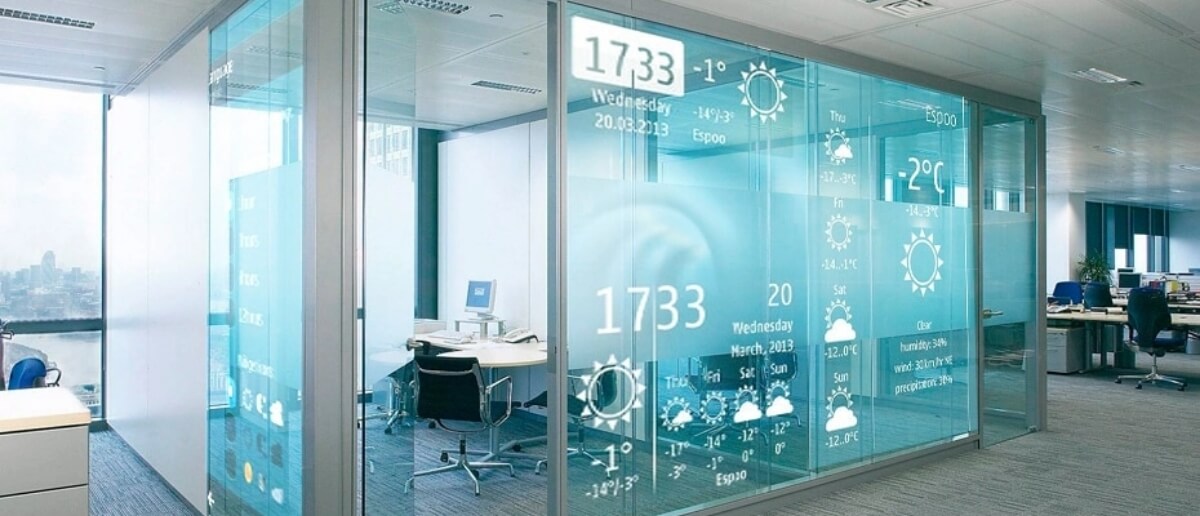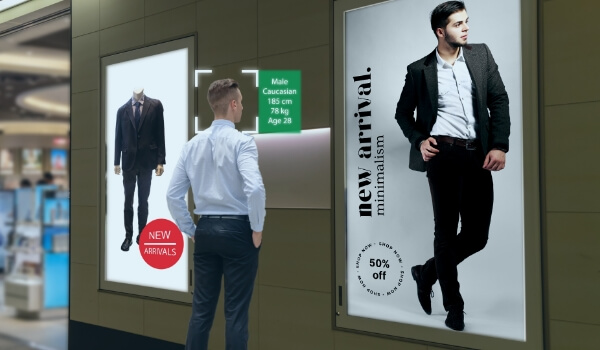
Dec 21 2023
8 min read


Jan
We have all witnessed how the textbooks in our hands have been replaced by laptops, newspapers with tablets, and novels by kindle. In this race to digitization, even billboards and company signages are rapidly adopting digital screens. Enter a mall, and you see umpteen digital screens displaying advertisements and digital signages for multiple brands and businesses.
As per a study by Intel, well-designed digital signage captures 400% more views than signage on static displays. These signages work in multiple settings – retail stores, corporate spaces, academic buildings, and public spaces for sharing essential product information, marketing, targeted messaging, and enhancing brand recognition.
With rapid technological advancements and the rising needs of businesses, the future of digital signage seems promising. And according to a study by study by Grand View Research, the global digital signage Industry is expected to be worth $45.3 billion by 2030, witnessing a CAGR (Compounded annual growth rate) of 7.7% over the forecast period.
Let’s dive in and see what we can expect from digital signage in the coming years.
1.Increase in audience interactivity
Digital signage has been seeing and continues to witness advancements in customer interaction. It offers multiple features, including tabletop ordering, built-in games, interactive maps, and personalized catalog displays. These features are expected to grow in the coming times.
Additionally, non-touch interactive solutions using gestures and voice control measures will gain traction compared to touchscreen platforms, given the need to comply with social separation and containment measures post the Covid-19 pandemic.
Take a look at this incredible voice-activated wayfinding system:

2.Growing functions like facial analytics
One of the key benefits of display solutions that is yet to be fully explored is the use of digital signage for analytics. However, businesses are catching up on this; one of the functionalities gaining popularity is facial recognition. These days, screens with facial recognition tech provide access to restricted or private places.
Beside sensors, these screens use AI to track the footfall in a store and analyze the number of repeat customers, enabling retailers to identify loyal customers eligible for reward programs.
Retail outlets can also use digital screens for sentiment analysis to determine how browsing customers react to various products. Screens placed near product aisles can also track customer actions, gender, age, and other demographics. These analytics are then used to display personalized advertisements and promotions to reduce the customer churn.

Another common commercial application is the ability to self-check in. The hospitality industry can use facial analytics in digital signage to recognize people who have booked rooms or reserved tables and then direct them to the correct location or provide the information they need to carry on with the check-in process.
3.Mobile-driven OOH marketing
We already have the technology to connect digital signage and mobile phones: QR codes. Businesses can accomplish a lot using QR codes: redirect customers to a restaurant’s food menu or a company’s information brochure.QR codes can also be used for gamified discounts to add to retailtainment.
Besides QR codes, multiple technologies can combine innovatively to give results, like the Amazon Go model, where the modern convenience stores will be staff-less and queue-less; here, shopping will be guided entirely by sensors, computer vision, AI, etc.
The bringing together of the physical and digital worlds will create more phygital business models like Amazon Go. Currently, the US has more than 25 Amazon Go stores, and the retail giant plans to launch more in the future.
4.System-integrated digital signage
From being a simple passive display of company advertisements and information, digital signage technology has become a primary asset for operational efficiency You can show live dashboards, appointments, vehicle information and so much more. This is possible because modern signage software can be integrated through API bindings with third-party systems.
These third-party systems can be a company’s existing business tools like CRMs, ERPs, employee experience, and Businesses Intelligence platforms. Digital signage software applications can also be connected to backend servers like Flight Information, Bus Information, and POS systems.
Integrations allow pulling data in real-time and using that data either by displaying it directly on the screens or by creating parameters that enable showing different information on different screens.
Here are two real-life case studies of Pickcel clients that show how system-integrated digital signage might help businesses:
Case Study of NEC, India: Building a passenger information system
Case Study of My Salon Suite, USA: Designing a digital service directory and promotion platform
5.Rise in live-streaming activities

In corporate offices, live streams will bring global workforces and hybrid and remote workers together to accomplish successful conferences, town halls, and expos.
Real-time feedback and customer testimonials can also be displayed to attract more customers: businesses can live-stream the feeds from the company’s social media accounts like Twitter, Instagram, and other handles to leverage user-generated content like tweets, shout outs, and Influencer reviews.

6.Rapid adoption in several places and industries

A case in point here is the use of digital signage in museums. The digital screen used for the signage also acts as an audio-visual guide, enabling visitors to interact with the exhibition. Additional background information is presented to the users when the digital screen is held near the RFID reader associated with a display.
Many art galleries are also using screens to make their exhibits alive. Recently, Pickcel’s client Panache deployed digital photo frames for their restaurant customer.
Talking about the omnipresence of screens, there has been a growing number of screens at places of worship. Many churches use digital signage for several purposes like fundraising, event promotions, and more.
Despite the multifaceted use of digital signage, the advertisement industry continues to be the biggest market for electronic displays. But the near future will see changes in the way ads are presented and ad spaces are bought and sold.
The future of digital signage advertising will see a transition to 3D and 4D advertisements where more realistic and hyper-realistic content will create never-seen-before experiences. Further, there will be greater ad personalization. In terms of ad space buying and selling, AI will play a massive role in automating and optimizing the trade for renting ad spaces.
Shifting to 3D and 4D advertisements
Several companies have already incorporated 3D and 4D advertisements or displays through digital screens. Several companies like LG, Nike, Amazon, and others have used 3D digital billboards. A few companies have gone a step ahead and added aroma-emitting devices to these digital signages. A famous example is NTT (a Japanese telecommunications company). Its signage combines digital signage with NTT’s Kaori Tsushin (fragrance communication) online service, which instructs specified connected devices to emit mood-heightening aromas.
These signages help to amplify the impact the message or the advertisement creates. They provide a unique digital experience to the customers, which stands out from traditional signage. These are a sure-shot way to capture the audience’s attention, as these advertisements are literally jumping out of the board.
Rise in programmatic advertising
The future of display advertising is going to be programmatic advertising. Programmatic advertising is when the human-negotiated advertising contracts between the publisher and the seller are replaced by real-time buying of advertising spaces using Artificial Intelligence-based software.
These software use precise targeting tactics to segment the audience with real-time traffic data, making it easier to buy, display and optimize ads with automation.
It applies not only to digital ads on the web but also to physical spaces with digital signage. For example, many digital signages display messages according to the time of the day and the target audience in proximity. It helps deliver more precise and relevant messaging to the right users, enabling personalization and optimizing the entire process for increased returns. Such innovative and personalization efforts are expected to increase in the coming times.
In the future, we will witness the rise of sophisticated and smart digital signage systems that will find more operational use in business. There will also be rapid adoption of high-resolution screens, interactive features, and connected systems. Additionally, artificial intelligence and machine learning will forever change how we interact with screens.
Take complete control of what you show on your digital signage & how you show it.
Start Free Trial Schedule My Demo
Dec 21 2023
8 min read

Dec 19 2023
6 min read

Dec 14 2023
7 min read

Dec 8 2023
8 min read